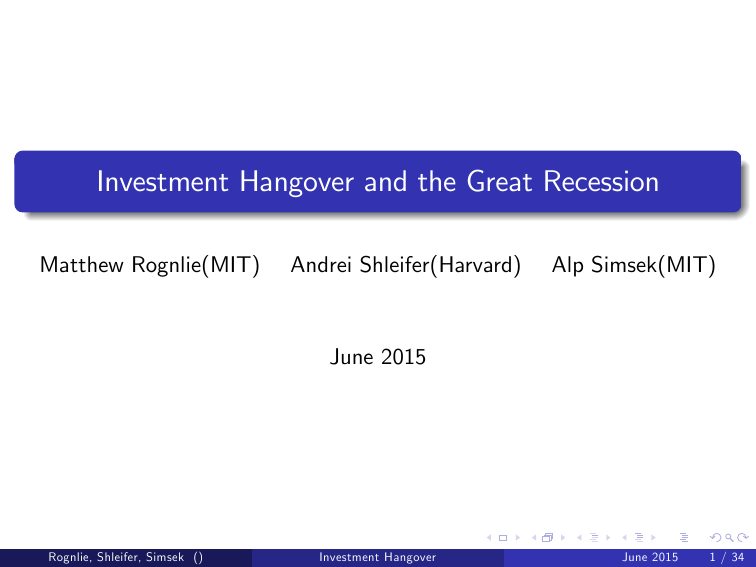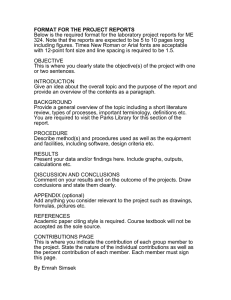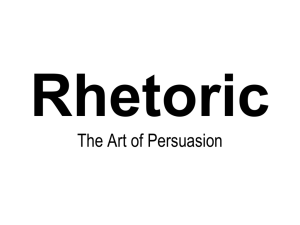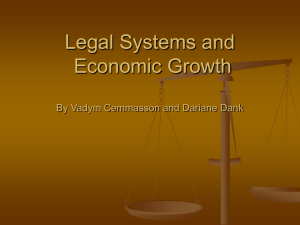Investment Hangover and the Great Recession Matthew Rognlie(MIT) Andrei Shleifer(Harvard) Alp Simsek(MIT)
advertisement

Investment Hangover and the Great Recession
Matthew Rognlie(MIT)
Andrei Shleifer(Harvard)
Alp Simsek(MIT)
June 2015
Rognlie, Shleifer, Simsek ()
Investment Hangover
June 2015
1 / 34
What caused the Great Recession?
Great Recession: Worst slump since Great Depression. Why?
Recent macro views: Bust of the housing bubble.
1
Financial crisis and bank lending channel
(Bernanke-Gertler, Kiyotaki-Moore, Chodorow-Reich...)
2
Household deleveraging crisis reduced consumption
(Eggertsson-Krugman, Guerrieri-Lorenzoni, Mian-Su…...)
Low demand and recession, exacerbated by the liquidity trap (Hall...)
Rognlie, Shleifer, Simsek ()
Investment Hangover
June 2015
2 / 34
Asymmetric recovery poses a challenge
Challenge: Why is residential investment left behind in recovery?
This time is di¤erent: Typically leads the recovery (Leamer, 2007).
This paper: New (complementary) channel: Investment hangover.
Rognlie, Shleifer, Simsek ()
Investment Hangover
June 2015
3 / 34
Key observation: There was also an investment bubble...
Rate ( %)
64
69
Homeownership rate
1990
1995
2000
2005
2010
2015
0
0
Existing sales ( 000s)
4000
500
1000
New sales ( 000s)
8000
1500
Existing and new home sales
1990
1995
2000
2005
2010
2015
Year
Existing home sales
New home sales
...that created an overhang of residential capital.
Rognlie, Shleifer, Simsek ()
Investment Hangover
June 2015
4 / 34
How does the economy decumulate overbuilt capital?
We build stylized model with excess initial residential capital.
Reduction in residential investment (Hayek...)
But countered by reduction in the real interest rate and reallocation.
Nonresidential investment picks up. No (economy-wide) recession.
Second key ingredient: Liquidity trap and bounded r .
Main result: Limited reallocation and a Keynesian recession.
Rognlie, Shleifer, Simsek ()
Investment Hangover
June 2015
5 / 34
Overbuilding also induces asymmetric recovery
What happens to nonresidential sectors during the recession?
Nonresidential investment can initially fall despite low rates.
Intuition: Low demand & low return (similar to the accelerator).
Later, low rates dominate and nonresidential investment booms.
This generates asymmetric recovery, as in the Great Recession.
Policy implications:
Private investment decisions ine¢ cient due to demand externalities.
Broad policy lesson: Transfer investment to demand-de…cient dates.
Rognlie, Shleifer, Simsek ()
Investment Hangover
June 2015
6 / 34
Related literature/contributions
Housing and de…cient demand in the Great Recession:
De…cient demand: …nancial frictions, deleveraging, stagnation...
Housing: Iacovieollo-Pavan (2013), Boldrin et al. (2013)...
Recessions driven by overbuilding/reallocation:
News-driven cycles/overhang. Beaudry-Galizia-Portier (2014).
Reallocation vs. aggregate: Lilien (1982), Blanchard-Diamond (1989).
Supply side frictions to reallocation: Caballero-Hammour (1996)...
General mechanisms during the liquidity trap:
Low demand reduces investment: Schmitt-Grohe and Uribe (2012)...
Demand externalities: Farhi-Werning (2013), Korinek-Simsek (2014)...
Rognlie, Shleifer, Simsek ()
Investment Hangover
June 2015
7 / 34
Roadmap
1
Baseline version: Basic investment hangover mechanism.
2
Extension: Investment response and the acceleration principle.
3
Extension: Aggregate demand externalities, policy implications.
Rognlie, Shleifer, Simsek ()
Investment Hangover
June 2015
8 / 34
Environment with two types of capital
Time t 2 f0; 1; :::g with two goods: consumption and housing.
Three factors: ht ; kt ; lt . Production functions ht and F (kt ; lt ).
Absent shocks, economy converges to target level, h .
We capture past overbuilding with h0 > h . Adjustment.
No adjustment costs in the baseline model. Evolution:
ht+1 = ht 1
Rognlie, Shleifer, Simsek ()
h
+ ith and kt+1 = kt 1
Investment Hangover
k
+ itk .
June 2015
9 / 34
Household decisions
Representative household with preferences, with two simpli…cations:
U (^
ct ; lt ; ht ) = u (^
ct
1
v (lt )) + u h 1 [ht
Suppose u h is large. Then, decumulation in single period,
ht+1 = h , which implies ith = h
2
h ].
GHH prefs: u (^
ct
v (lt )), where ct = c^t
ht 1
fct ;at+1 gt
s.t.
Rognlie, Shleifer, Simsek ()
1
X
t
.
v (lt ) is net consumption.
Labor supply solves the static problem, et = maxlt wt lt
Consumption-saving solve the dynamic problem:
max
h
v (lt ).
u (ct )
t=0
ct + at+1 + ith = et + at (1 + rt ) +
Investment Hangover
t.
June 2015
10 / 34
Main ingredient: Lower bound on the interest rate
Investment sector equates cost of capital to net return,
rt+1 = Rt+1
k
.
Liquidity trap: Nominal interest rate is bounded:
n
rt+1
0 for each t.
Nominal prices are completely sticky (coming) so that,
n
rt+1
= rt+1
Rognlie, Shleifer, Simsek ()
0 for each t.
Investment Hangover
June 2015
11 / 34
Supply side: New Keynesian with extreme stickiness
Competitive …nal good sector with, y^t =
R1
0
y^t ( )
" 1
"
d
"=(" 1)
Monopolistic intermediate sector with, y^t ( ) = F (kt ( ) ; lt ( )).
Monopolists have preset nominal price, Pt ( ) = P. Simplicity.
They face real price, pt ( ) = Pt ( ) =P = 1, and thus solve,
t
= max F (kt ; lt )
k t ;lt
wt lt
Rt kt s.t. F (kt ; lt )
y^t .
In equilibrium, net output is equal to net aggregate demand,
yt = F (kt ; lt )
Rognlie, Shleifer, Simsek ()
v (lt ) = ct + itk + ith :
Investment Hangover
June 2015
12 / 34
Monetary policy: Output stabilization without commitment
Monetary policy tries to replicate the e¢ cient benchmark:
E¢ cient benchmark maximizes net output in every period,
yt = s (kt )
F (kt ; lt )
v (lt ) , where lt = arg max F (kt ; lt )
lt
v (lt ) .
These also imply an interest rate, rt+1 . Monetary policy,
n
rt+1
= rt+1 = max 0; rt+1
for each t.
This MP is constrained e¢ cient absent commitment power.
Equilibrium is ht ; kt ; lt ; c^t ; ct ; ith ; itk ; y^t ; yt
Rognlie, Shleifer, Simsek ()
t
Investment Hangover
; fwt ; Rt ; rt+1 ;
t gt
s.t...
June 2015
13 / 34
Properties of the equilibrium
Lemma: Equilibrium features e¢ cient outcomes or the liquidity trap:
1
If rt+1 > 0, then yt = s (kt ) ; lt = lt and Rt = s 0 (kt ).
2
If rt+1 = 0, then yt
s (kt ) ; lt
s 0 (kt ) :
lt and Rt = R (kt ; yt )
Demand shortage reduces output, employment, and factor returns,
Rt = (1
t ) Fk
Rognlie, Shleifer, Simsek ()
(kt ; lt ) and wt = (1
Investment Hangover
t ) Fl
(kt ; lt ) , where
t
June 2015
0.
14 / 34
Investment hangover
Suppose economy starts with too much residential capital:
h0 = (1 + b0 ) h , where b0 > 0.
The economy reaches date 1 with h1 = h and some k1 .
From date 1 onwards, no liquidity trap, rt+1 > 0 for each t
Continuation
fct ; kt+1 g1
t=1
1.
solves standard neoclassical system.
Let c1 = C (k1 ) denote the solution where C ( ) is increasing.
Next consider the equilibrium at date 0....
Rognlie, Shleifer, Simsek ()
Investment Hangover
June 2015
15 / 34
Key insight: Overbuilding is a demand shock
The residential investment at date 0 is:
i0h = h
1
h
h0 =
h
b0 1
h
h .
Overbuilding b0 represents a negative shock to demand.
Equilibrium depends on investment and consumption responses.
k
Let k denote the solution to s 0 k
k1
= 0. Then, r1
0 implies:
k.
Interest rate bound implies upper bound on investment...
Rognlie, Shleifer, Simsek ()
Investment Hangover
June 2015
16 / 34
Key insight: Aggregate demand is bounded
Consumption is similarly bounded,
c0
c 0 , where u 0 (c 0 ) = u 0 C k
.
So there is an upper bound on aggregate demand:
y0
y0
k
1
k
k0 + c 0 +
h
b0 1
h
h .
The equilibrium depends on a comparison of y 0 and s (k0 )...
Rognlie, Shleifer, Simsek ()
Investment Hangover
June 2015
17 / 34
Main result: Overbuilding triggers a recession
y 0 < s (k0 ) if and only if b0 > b 0 , which gives the main result.
Proposition
(i) Suppose b0
b 0 . Then, e¢ cient outcomes,
r1
0; y0 = s (k0 ) and l0 = l0 .
(ii) Suppose b0 > b 0 . Then, liquidity trap and recession:
r1 = 0; k1 = k; y0 = y 0 < s (k0 ) and l0 < l0 .
Moreover, y0 and l0 are decreasing in overbuilding, b0 .
Rognlie, Shleifer, Simsek ()
Investment Hangover
June 2015
18 / 34
0.3
4.6
0.2
4.55
1.85
1.8
0.1
4.5
1.75
0
4.45
-0.1
1.7
0
0.05
0.1
0.15
1.2
0
0.05
0.1
0.15
5.05
5
4.95
4.9
4.85
4.8
4.75
4.7
1
0.8
0.6
0.4
0.2
0
0
0.05
0.1
0.15
0.05
0.1
0.15
0.3
0.25
1
0.2
2.94
0.95
0.15
2.93
0.9
0.1
0.85
0.05
Rognlie, Shleifer, Simsek ()
0.15
0.05
0.1
0.15
0
0.05
0.1
0.15
0.35
1.1
1.05
0.1
0
7
1.15
0.05
0.15
6.5
2.95
0
0.1
8
0
0.8
0.05
7.5
2.96
2.92
0
0
0.05
0.1
Investment Hangover
0.15
0
June 2015
19 / 34
Comparative statics of the liquidity trap
b0
k
1
k
k0 + c 0 +
1
h
h
h
h
s (k0 )
.
Liquidity trap (b0 > b 0 ) more likely if k and c 0 are lower.
Overbuilding is complementary to other demand shocks.
Liquidity trap also more likely if k0 higher.
Overbuilding of two types of capital is complementary.
Rognlie, Shleifer, Simsek ()
Investment Hangover
June 2015
20 / 34
Comparative statics with respect to durability
To analyze durability, consider two housing capitals, hd and hn .
Suppose each has target level h =2 but di¤erent durability:
hd
<
hn
, with
hd
+
hn
=2 =
h
.
Proposition
Given average overbuilding b0d + b0n =2 = b0 , the incidence of liquidity
trap 1 [lt < lt ] is increasing in overbuilding of durable capital b0d .
Intuition: Depreciation “erases” overbuilt capital:
y0 = k
(1
) k0 + c 0 +
h
h
b0d 1
hd
h
2
b0n 1
hn
h
.
2
Overbuilding durable capital (housing, structures) is bigger concern.
Rognlie, Shleifer, Simsek ()
Investment Hangover
June 2015
21 / 34
Dynamics and aftermath of the recession
4.8
0.35
0.3
4.6
4.4
0.25
0.2
4.2
4
0.15
0.1
3.8
3.6
0.05
3.4
1.9
1.8
1.7
1.6
1.5
0
0
1
2
3
1.4
8.5
1.2
5
8
1
0.8
4.5
7.5
4
6.5
7
0.6
0.4
0.2
6
3.5
0
0.3
1.2
3
2.8
1.1
2.6
1
0.25
0.2
2.4
0.15
0.1
0.9
2.2
0.05
0.8
2
0
1
2
3
0
1
2
3
0
0
1
2
3
Rate r is low in the aftermath. Not secular stagnation, but fragility.
Rognlie, Shleifer, Simsek ()
Investment Hangover
June 2015
22 / 34
How about the other sectors?
Note that overbuilding (weakly) increases k1 and c0 .
Recession is con…ned to the residential sector.
But the return to capital at date 0 is very low:
0.02
0
-0.02
-0.04
-0.06
-0.08
-0.1
-0.12
-0.14
-0.16
-0.18
0
1
2
3
This suggests capital could also fall, if it could respond...
Rognlie, Shleifer, Simsek ()
Investment Hangover
June 2015
23 / 34
Understanding the investment response
To analyze k response, we spread decumulation over time.
Assume, disinvestment is subject to “adjustment costs,”
ith
i h for each t, for some i h <
h
h .
Suppose h0 is such that decumulation is complete in T periods.
Then, the residential investment path satis…es
ith =
h
ih <
h
h
h
if t 2 f0; :::; T
if t T
1g
.
The rest of the equilibrium is unchanged.
Rognlie, Shleifer, Simsek ()
Investment Hangover
June 2015
24 / 34
Liquidity trap over multiple periods
As before hT = h and fct ; kt+1 g1
t=T is neoclassical.
Conjecture equilibrium with liquidity trap at each t < T .
Consumption path fc t gTt=0 determined by Euler and cT = C k .
Capital stock when the trap ends satis…es kT = k.
We still need to characterize fkt gTt=11 ...
Rognlie, Shleifer, Simsek ()
Investment Hangover
June 2015
25 / 34
Liquidity trap over multiple periods
Investment at each date t
1 equates net bene…ts and costs:
k
R (kt ; yt )
= 0.
Output at each t < T determined by aggregate demand:
yt = c t + kt+1
1
k
kt + i h .
We can solve these equations backwards starting with kT = k.
The resulting path is an equilibrium as long as y0 < s (k0 ).
Proposition
There exists i2h such that, if i h < i2h , then investment is nonmonotonic:
k0 > k1 and k1 < kT = k.
Rognlie, Shleifer, Simsek ()
Investment Hangover
June 2015
26 / 34
4.2
1
4
0.15
0.95
0.1
3.8
0.9
3.6
0.85
0.8
0.05
3.4
0
3.2
0.75
0.7
0
1
2
3
0.25
4
2.4
0.2
3.8
3.6
2.2
0.15
3.4
0.1
2
0.05
1.8
3.2
3
2.8
0
0.5
1.4
1.1
1.3
1
1.2
0.9
0.3
0.8
0.2
1.1
0.4
0.7
0.1
1
0.6
0
1
2
3
0
1
2
3
0
0
1
2
3
With severe shock, investment response is nonmonotonic.
Recovery (period 1) is asymmetric, as in the Great Recession.
Rognlie, Shleifer, Simsek ()
Investment Hangover
June 2015
27 / 34
Similarities with the accelerator theory
This resembles the accelerator theory (Clark, Metzler, Samuelson...)
Linearize R (kt ; yt ) =
k
around (k; y ) ' k; s k
kt '
Assuming
k
, to obtain:
+ yt .
' 0, we further obtain the approximation:
itk ' kt+1
kt '
(yt+1
yt ) for each t
1.
Investment depends on changes in yt , as in the accelerator.
Rognlie, Shleifer, Simsek ()
Investment Hangover
June 2015
28 / 34
Di¤erences from the accelerator theory
Initial capital stock important: Investment at date 0,
i0k ' k1
k0 '
+ y1
k0 .
Unlike future dates, y0 and k0 are inversely related.
Accelerator quali…ed for the earlier phase of the recession.
Liquidity trap (constrained rt ) important. Otherwise dampening.
Rational expectations vs. backward-looking expectations of yt .
Rognlie, Shleifer, Simsek ()
Investment Hangover
June 2015
29 / 34
Policy implications
We focus on policies for controlling investment.
Consider version with u (c0 )
v0 (l0 ) at (only) date 0.
Output, y0 = F (k0 ; l0 ) and labor wedge, 1
sep
Lemma: If b0 > b 0
r1 = 0;
0
0
=
v00 (l0 )
u 0 (c0 )F l (k 0 ;l0 ) .
(and no adj. cost), then recession with
> 0; y0 = y 0 < y0 , and R0 = (1
0 ) Fk
(k0 ; l0 ) < R0 .
Start with ex-post (recession-management) policies at date 0.
Then introduce date
Rognlie, Shleifer, Simsek ()
1 and investigate ex-ante policies.
Investment Hangover
June 2015
30 / 34
Ex-post policies: Slowing down investment
Should the planner stimulate h investment at date 0?
h is u 0 (c0 )
Agents’value from raising h1
Constrained planner that sets h1
0
B
u 0 (c0 ) B
@ 1
h
1 h
1+r1
1 < 0:
h . Marginal value:
(1
)
| {z 0}
+
planner’s cost of capital
Slow down disinvestment, h1 > h , when
0
dc0
0
dh1
| {z }
additional bene…t
1
C
C.
A
> ~0 (i.e., b0 > b~0 ).
Lower cost of capital, due to aggregate demand externality.
Rognlie, Shleifer, Simsek ()
Investment Hangover
June 2015
31 / 34
Ex-ante Anticipated investment overhang
Consider date
1 with two states fH; Lg for date 0.
L is the same as before, H features higher target 1 +
Start with, h
1
= 1+
H
h and k
Equilibrium features h0 = 1 +
u 0 (c
Lemma: If
H
1)
H
Rognlie, Shleifer, Simsek ()
=
+ 1
sep
> b 0 (k ) and
H
1
= k . Believe
H
H
2 (0; 1).
h and k0 determined by,
k
R0H + 1
u 0 c0H
k
H
L
R0 + 1
u 0 c0L
H
h .
.
2 ( ; 1), then liquidity trap in L.
Investment Hangover
June 2015
32 / 34
Ex-ante: Restricting investment
Constrained planner that sets h0 ; k0 . Chooses h0;pl = 1 +
H
h .
Chooses k0 by solving ex-ante planning problem. Determined by:
1
0
k
H
H
u 0 c0H 1
0 R0 + 1
C
B
C
B
0
C
B
B
C
u (c 1 ) = B
k C 0
H BR L + (1
L C
)
1
+
1
c
u
0
0
0
A
@
A
@
|
{z
}
discounting durable part
Restrict ex-ante investment, k0;pl < k0 , which yields
0
>
0;pl
> 0.
Postpone building to state L. Aggregate demand externality.
Broad lesson: Substitute investment to demand-de…cient dates.
Rognlie, Shleifer, Simsek ()
Investment Hangover
June 2015
33 / 34
Conclusion: Investment hangover and Great Recession
Model of investment hangover, with Austrian&Keynesian features.
Overbuilding induces reallocation of resources to other sectors.
Liquidity trap limits reallocation and creates Keynesian recession.
Investment (accelerator) and consumption (multiplier) can fall.
Investment (plus output & consumption) recovers before housing.
Private investment choices ine¢ cient due to demand externalities.
Applications beyond the Great Recession:
Overbuilding of other sectors: Railroads, industrial plant/structures...
Constraints on the interest rate for other reasons: Currency unions...
Rognlie, Shleifer, Simsek ()
Investment Hangover
June 2015
34 / 34





